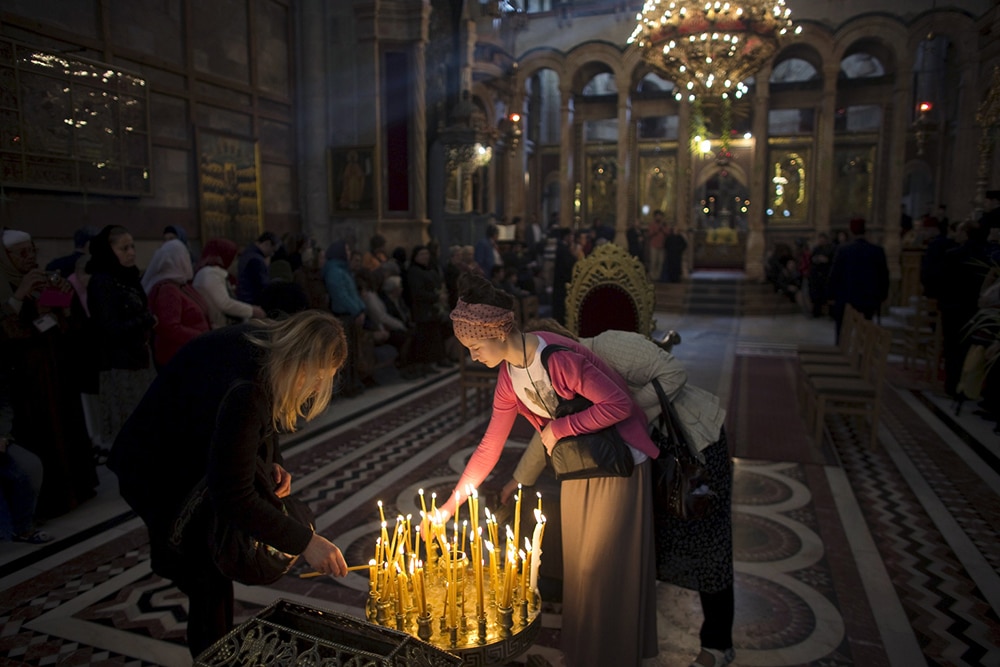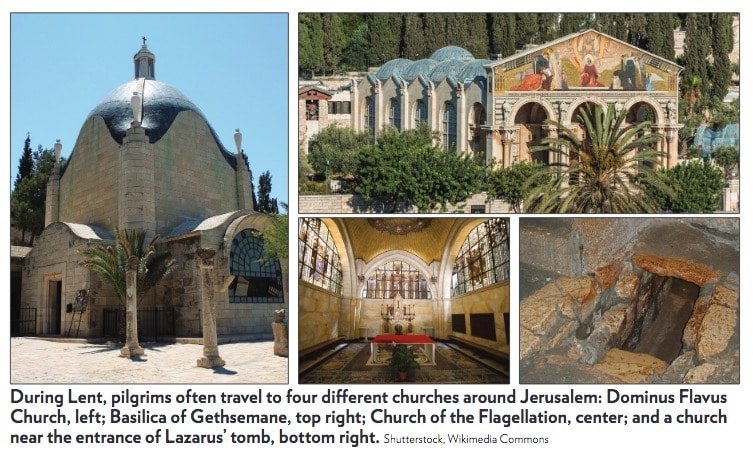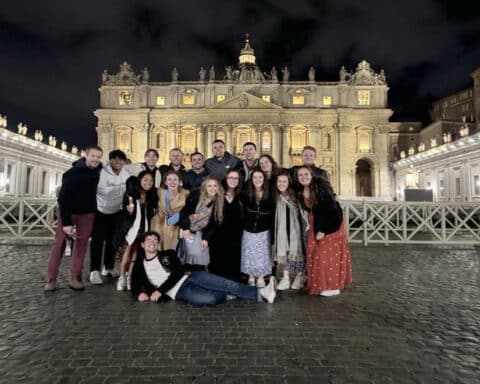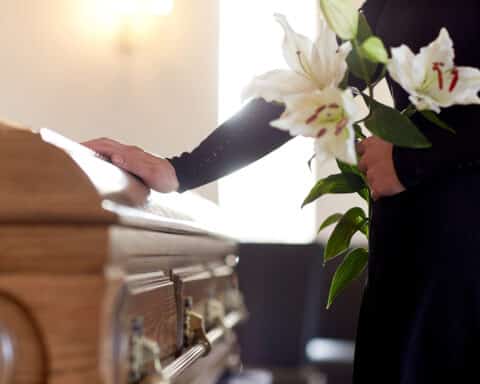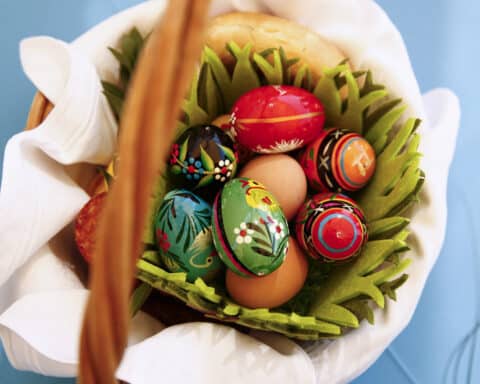With the presence of 13 different local churches — which encompass various Catholic, Orthodox and Protestant rites — celebration of Easter in the Holy Land in general, and specifically in Jerusalem, is an experience unlike any other. In a whirlwind of faith, these sacred spaces provide opportunities of encounter for locals and pilgrims, assisting them in entering into Holy Week and the Easter season through special liturgies and traditions.
Judith Sudilovsky writes from Jerusalem.
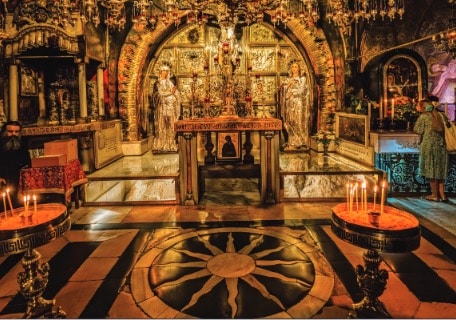
The Church of the Holy Sepulchre encompasses the traditional sites where it is believed Jesus was crucified, his body anointed and later laid in burial for three days before his resurrection. On years when the Western Church’s Easter falls on the same date as the Orthodox Palm Sunday, as it does this year, pilgrims will see liturgies appear to collide as the Catholic Easter Mass at the basilica continues while the Orthodox processions take place, including circling the church three times.

The shrine that houses the empty tomb of Christ — called the Edicule — is the most visited area of the Church of the Holy Sepulchre. Different denominations share the same space and take turns at specific times to pray.
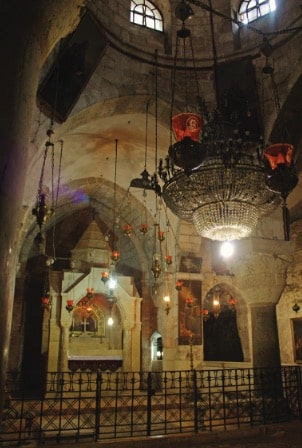
The Ethiopian Orthodox hold their Palm Sunday ceremony with traditional Ethiopian musical instruments at the Deir Sultan Monastery (located on the roof of the Church of the Holy Sepulchre) and then hold a procession three times around the Dome of St. Helena’s Chapel, where it is believed that in the fourth century St. Helen (mother of Constantine the Great, who first built the basilica) found the true cross used in Jesus’ crucifixion.
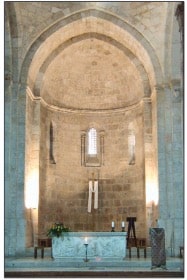
On Palm Sunday, locals and pilgrims process from the Church of the Holy Sepulchre, to the Mount of Olives, to the Basilica of St. Anne, which is a church built over the birthplace of Mary and home to her parents, Anne and Joachim. It is also located near the beginning of the Via Dolorosa ( “Way of Suffering”), which is the processional route in the Old City that Jesus followed on his way to Calvary and often is walked on Good Friday morning.
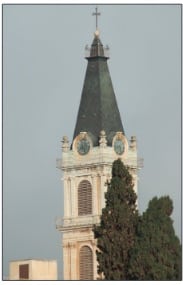
Wikimedia Commons
On Holy Thursday, the Mass of the Lord’s Supper is celebrated at the Holy Sepulchre by the Latin Patriarch. Later in the afternoon the Franciscans make their traditional pilgrimage from the St. Saviour Monastery to the Cenacle, or Upper room, on Mt. Zion. Tradition holds that this is where the Last Supper took place and later where the Holy Spirit came upon the apostles at Pentecost.
During Lent, the Franciscans — who serve as the guardians of the Holy Land holy sites for the Catholic Church — lead peregrinations (journey or pilgrimage in Latin) on four consecutive Wednesdays during Lent, visiting the places of Jesus’ passion. The first shrine visited during the peregrinations of Lent is the tear-shaped Dominus Flevit Church on the Mount of Olives, whose name literally means “the Lord wept.” According to tradition, it was here that Jesus wept looking at the outline of Jerusalem, telling his disciples about the coming end of Jerusalem and of the world. The three other churches visited during the peregrinations are the Basilica of Gethsemane, the Church of the Flagellation and the church standing near the tomb of Lazarus in the town of Bethany.

